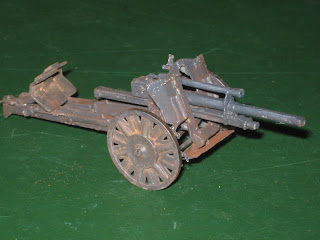Into
the Vally – The Vallentine tank and derivates 1938 to 1960, Dick Taylor,
MMPBooks, 2012.
I’m
primarily interested in early WWII, as frequent readers of this blog know. Lately I have read more and more about the British army and equipment. The tanks are fascinating, ugly and less than perfect, can you not love them?
Into
the Vally is a book about one tank, the Valentine. 192 pages of Valentine. If
you have no, or very limited, interest in that tank this is obviously not the book
for you. But if you are fascinated with the British army, really like details
and have any unanswered questions on this tank, then this is a book for you. It
is also filled with photos.
There
are chapters on:
-
Design, development and production: The Valentine was a private venture,
and we get details on how it came about, very detailed production figures and
info on the variants produced in Canada.
-
Technical description: descriptions, illustrations, drawings, layouts
and detailed photos of just about everything on the tank.
-
Description of gun tank marks: Everything you would need to know about
the different marks of the Valentine.
-
Operational use: Which units used it, where and when, and some action
reports.
-
Painting and markings: Colour plates etc.
-
Overseas service: The Valentine was used in by Canada, USSR, New
Zealand, Egypt, India, Jordan, Lebanon, South Africa, Portugal and Turkey. If
you’re interested in marks, what they were used for, when and what they were
bought for, you wil probably find an answer in this section.
-
Variants: Bridgelayers, mine flayers, duplex drive (amphibious), Bishop
(self propelled artillery), Archer (self propelled anti-tank gun) and some
other variants.
-
Walkaround: Detailed photos of existing tanks.
-
Conclusions: Just that
-
Reference list: If you’re not satisfied with what you got, you have
every chance so delve deeper.
-
Colour plates: Good if you want inspiration for painting your next
model.
All
in all a wonderful book if you’re into details and have any interest in the Valentine.
For you it is a rating of five out of five.
If
details and/or Valentine is not your cup of tea, then you might skip it. But I
think you might enjoy it anyway, so try to convince a friend to buy it and then
borrow it. You might be pleasantly surprised.
Now. I’m off to buy a couple of Valentines and maybe
a Bishop in 1/72.












